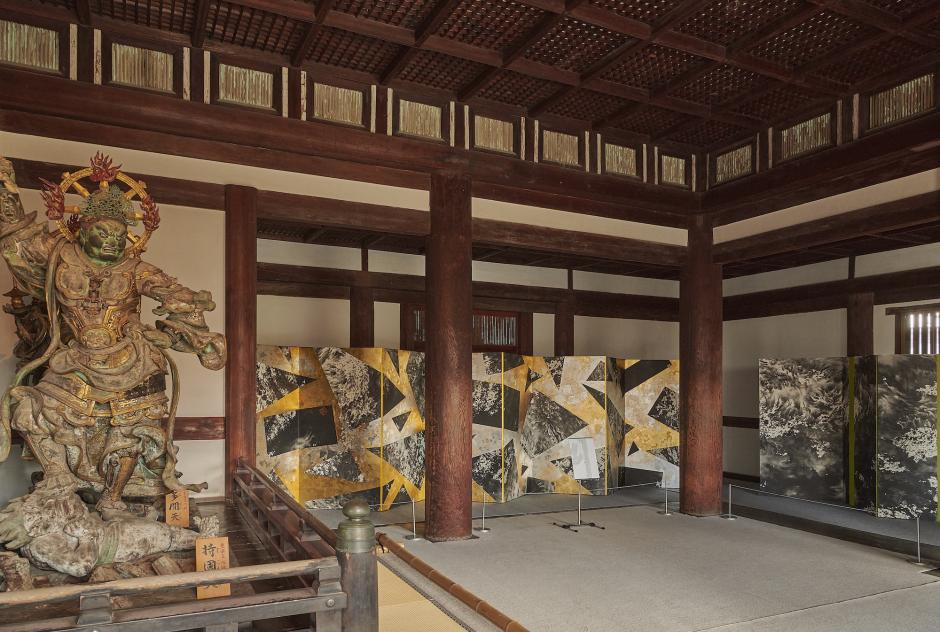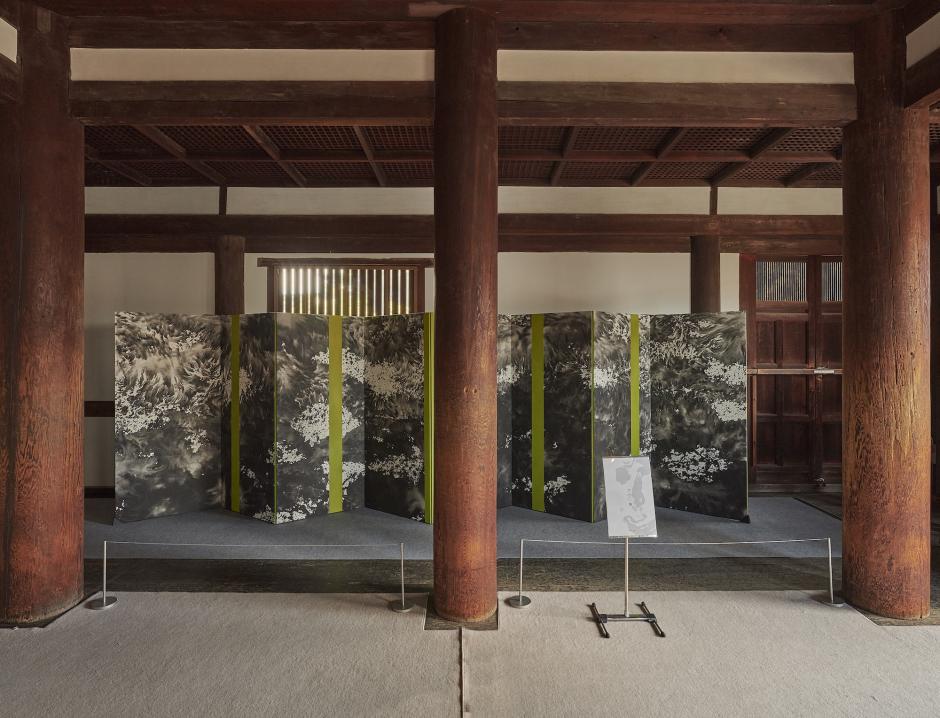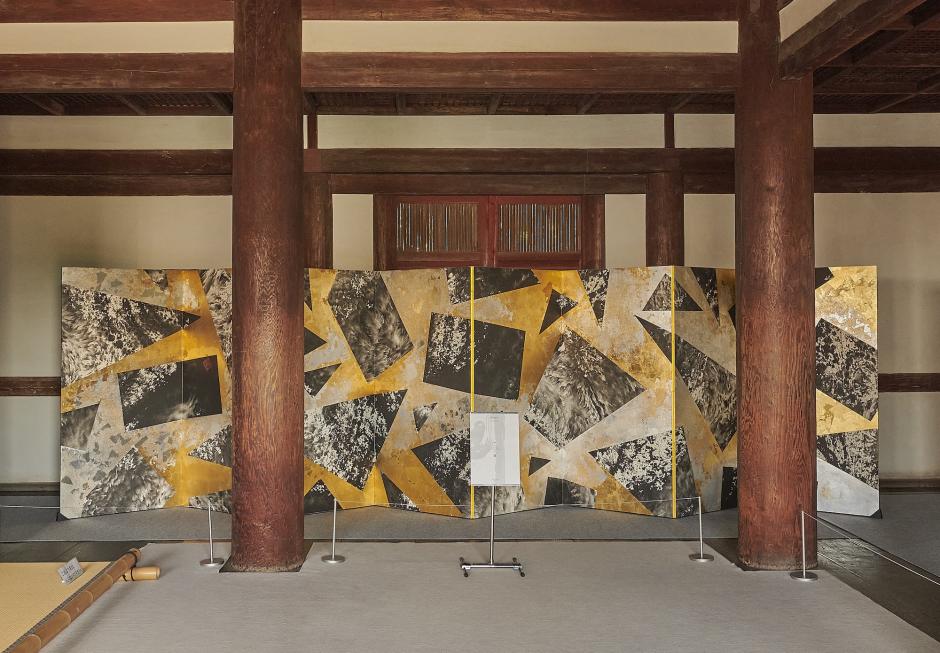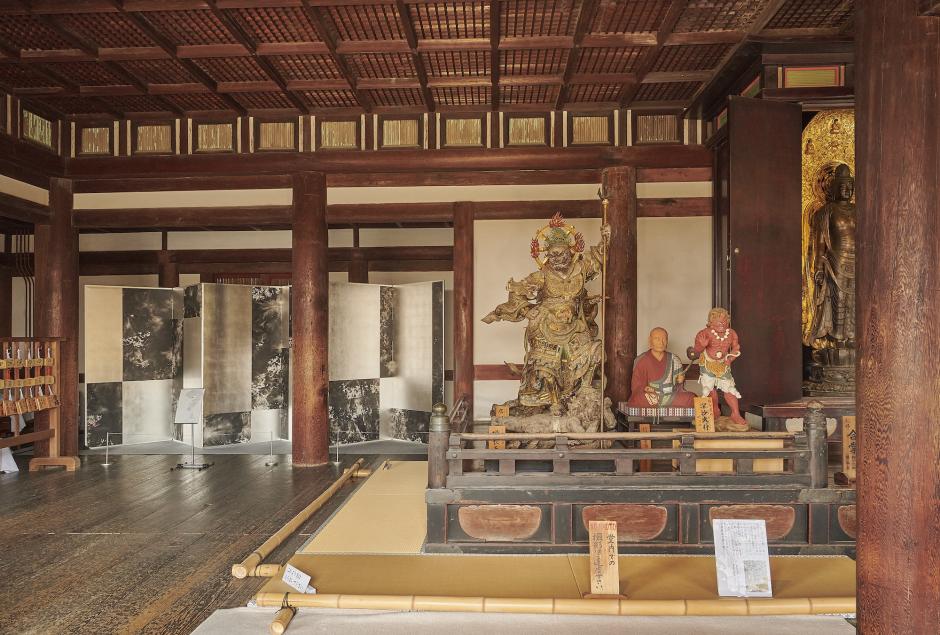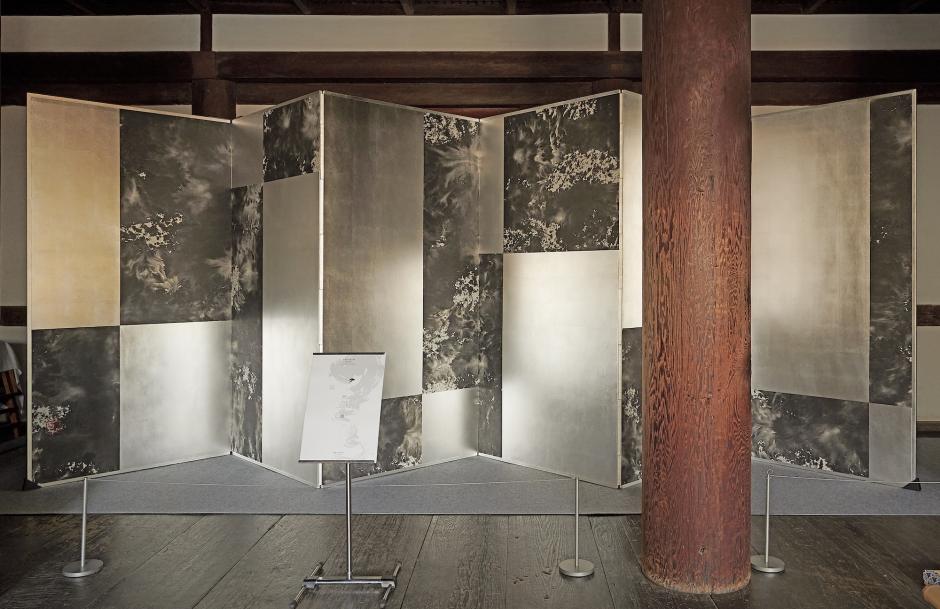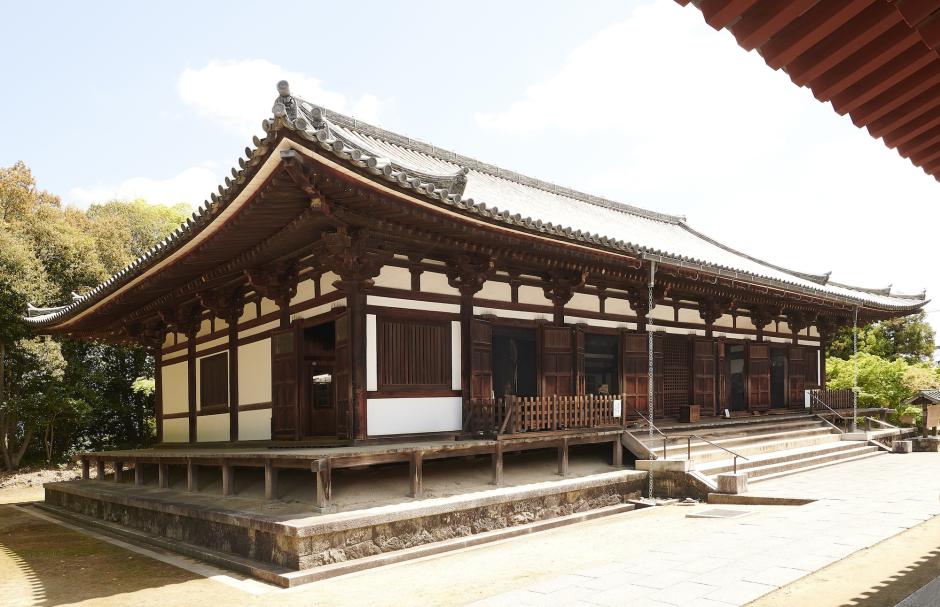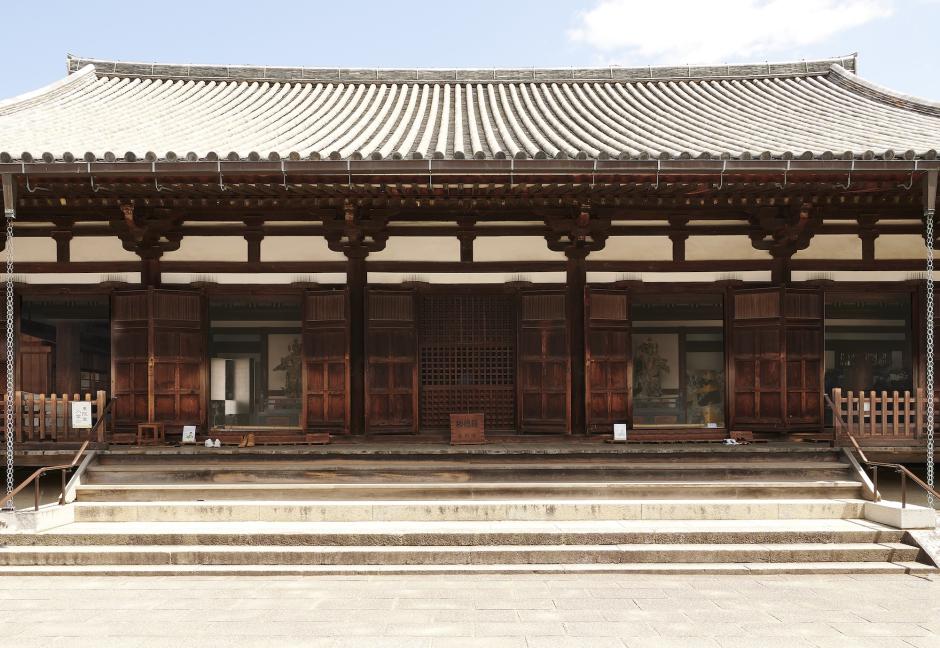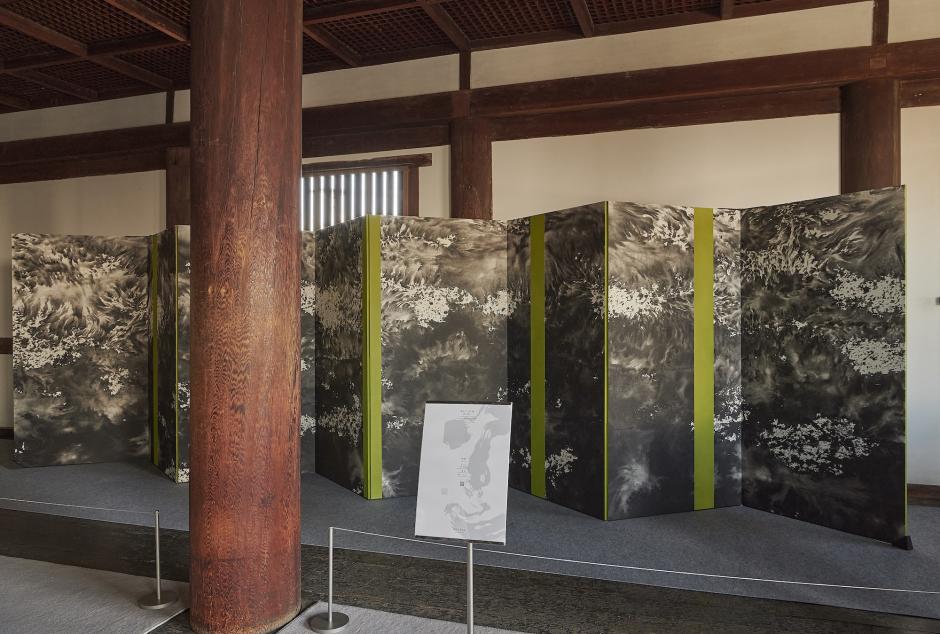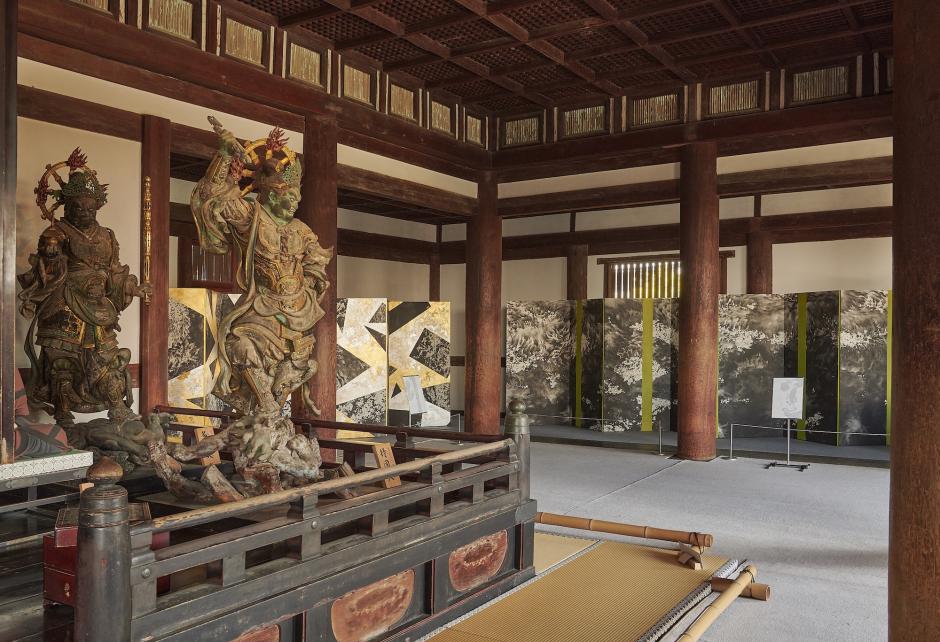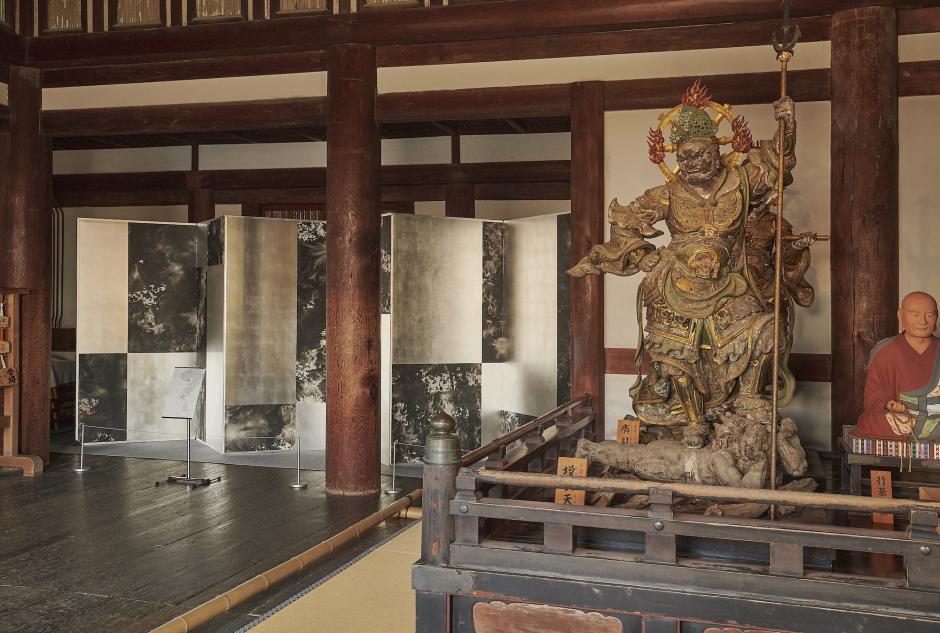联合国教科文组织登记的世界遗产—法相宗大本山药师寺东院堂(日本国宝)举办书画家娄正纲的个人展览「药师寺的娄正纲--游山玩水」,将于2025年4月24日(星期四)起正式开展。
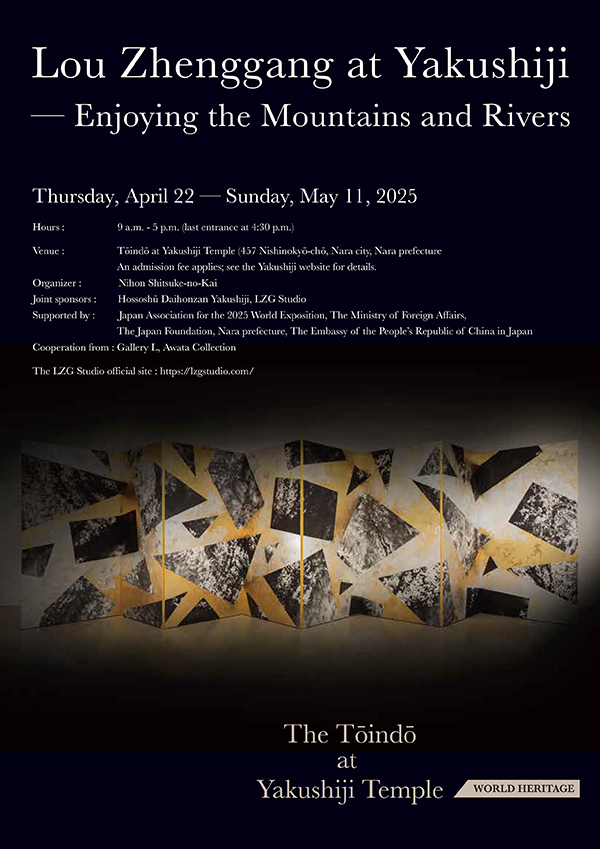
药师寺的娄正纲—游山玩水
会场:药师寺 东院堂(国宝)
展期:2025年4月24日(星期四)5月11日(星期日)
时间:9:00~17:00 ※开幕日4月24日 14:00~17:00
门票:免费
※参观本展览需购买 药师寺 的参观门票,详情请参考药师寺官方网站。
主办:一般社团法人日本躾之会(礼仪会)
共办:法相宗大本山药师寺、娄正纲工作室(LZG Studio)
后援:公益社团法人2025年日本国际博览会协会、日本外务省、国际交流基金、奈良县、中国大使馆
协办:Gallery L / Awata Collection
策划:菊池武恭(LZG Studio)
展览概要
1998年(平成10年),法相宗大本山药师寺的东院堂(国宝)作为「古都奈良的文化遗产」的构成资产之一,被联合国教科文组织列入世界遗产名录。此次书画家娄正纲的个人展览「药师寺的娄正纲——游山玩水」将于2025年4月24日(星期四)至5月11日(星期日)在此举办。
娄正纲出生于黑龙江省,自幼随父亲学习书画,在70年代的少年时期便已在中国书画界崭露头角,持续举办各种活动。1986年移居日本,以东京为创作基地。1993年至2000年,她移居纽约从事艺术创作活动,随后再次回到日本,目前在伊豆半岛进行艺术创作活动。
在艺术创作中,娄正纲始终思考“绘画是什么,应该做什么”,并在面对巨变中的现代艺术趋势时,坚持既不拘泥于传统,亦不受外界干扰,而是立志追寻源于自己内心深处涌现的美学价值的表现。
游山玩水—娄正纲的创作经常受到环绕其画室的山峦大海等大自然秀丽景色的启发。本次展览将在国宝药师寺东院堂展出2015年创作的三件屏风。
Lou Zhenggang 娄正纲
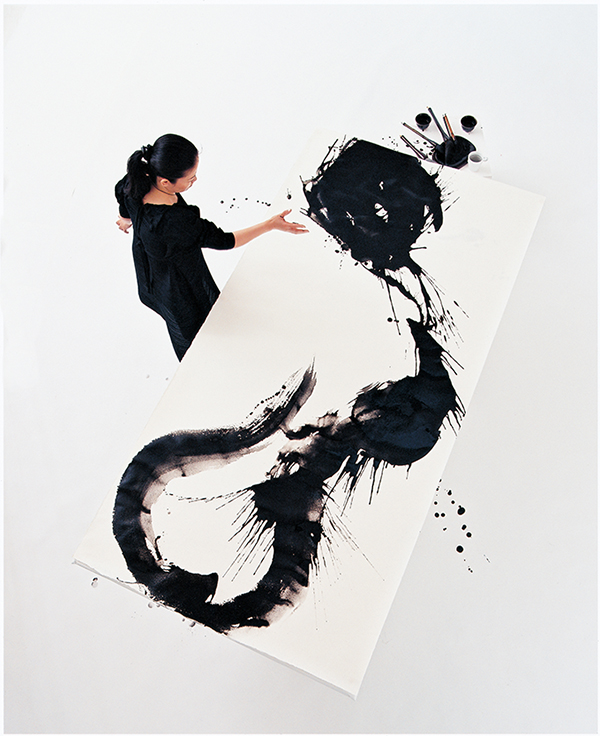
书画家。娄正纲在中国、日本和美国成功举办了27次个展和3次巡展。她以不懈的自我提升、对表现素材的探求、卓越的书画技艺、独特的审美观点和深厚的人文底蕴,创作了《生命与爱》、《日月同辉》、《心》、《和合》、《生生》、《自然》等系列作品。
近年来,她在伊豆开设工作室,发表了抽象绘画系列作品《无题》等,开拓了绘画艺术的新天地。2023年在东京ARTIZON美术馆举办的"ABSTRACTION抽象绘画的觉醒与发展 从塞尚、野兽派、立体派到当代"系列中成功出展,其作品在佳士得和其他国际拍卖行的私人拍卖会上售出,因其超越书法和绘画界限的独特艺术性而备受赞誉。
The Tōindō at Yakushiji Temple (WORLD HERITAGE)
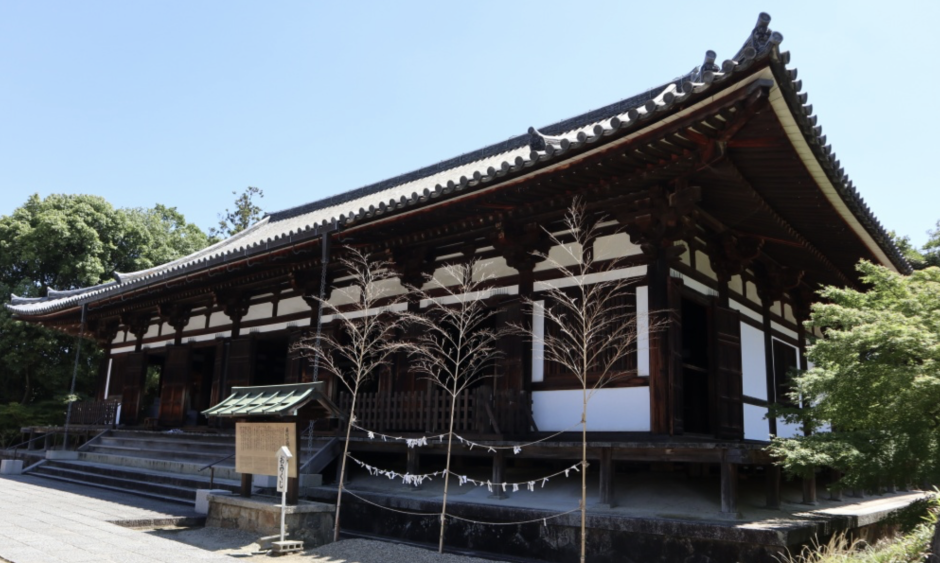
The Toindo was built during the early eighth century at the request of Imperial princess Kibi for the repose of the soul of her mother, Empress Genmei (660–721). The hall, a National Treasure, originally stood on the east side of the temple complex, hence its name. It was rebuilt in 1285 facing southward before being reconstructed in 1733 in its current orientation facing west, possibly for auspicious reasons. While the floors of temple halls are often earthen, Toindo has wooden flooring. It also has served as a hall for Zen meditation and at one point was renamed Toin Zendo. Each of these factors has contributed to it being known as the oldest extant Zen meditation hall in Japan.
Like the Large Lecture Hall (Daikodo), the Toindo features a hip-and-gable (irimoya-zukuri) roof, which arrived in Japan from China in the sixth century and has been used in temple and shrine architecture ever since. The gables usually provide protection for the core, or moya, of the building, while the hip roof covers raised aisles (hisashi) that run around the outside of the core. The roof itself is covered by the traditional tiling method known as hon kawarabuki composed of broad, flat concave tiles linked by semi-cylindrical convex tiles. The base of the building is raised to protect the structure from flooding and dampness.
https://yakushiji.or.jp/en/temples/012.html
